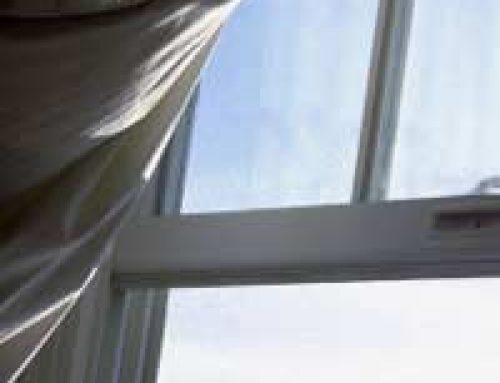 Media attention has shifted over the past year from encouraging us to calculate our personal carbon footprint that is how much carbon we individually use to live the lifestyle that we do annually, to now calculating the carbon footprint of our house as well, and then doing all we can to reduce that.
Media attention has shifted over the past year from encouraging us to calculate our personal carbon footprint that is how much carbon we individually use to live the lifestyle that we do annually, to now calculating the carbon footprint of our house as well, and then doing all we can to reduce that.
A drive for energy efficiency is important on a personal level, as well as at community and national level, as long as the purpose is clearly explained, and the end result of cutting national and international emissions of carbon, that are contributing to climate change and environmental damage, is clear. Whether you have a project to build your own home, and are looking to make it as energy efficient as possible, or simply wish to do your bit as a householder and aim at becoming carbon neutral, then the process of calculating the carbon output of your house (or future house) is an effective contribution to these global efforts.
Contents
Before We Start: Hidden Carbon Deposits
From an ecological perspective, the embodied energy used in the construction of an existing house needs to be acknowledged before any examination of current output levels. This embodied energy exists in the construction of the building – the materials used, how they were manufactured, the distances the materials traveled to the construction site, and the carbon output used in the building process. Unless you built the house yourself, or are on good enough terms with the builder/developer to find all this information out, then it’s going to be tricky to calculate what the carbon output was. But if you are currently or about to start construction of your own home, then this is an important factor to consider at the start.
With existing buildings, it should be possible for a specialist to make an educated guess, based on area, age of property, materials used etc, and then it would be possible to make a financial contribution, on a one-off basis, to a carbon neutral organisation that would offset this original carbon output made to construct your home, by planting trees or another scheme, on your home’s behalf.
Household Energy Output: Gas
Heating is the biggest source of energy in domestic households. Gas is the most common form of energy used. Dig out your gas bills from the previous year, and find the figures for kilowatt-hours (Kwh) instead of metered units. Add up all the figures from each quarter to come up with a total for the year.
A small house should be in the region of 10,000 Kwh per year; a medium house 20,500 Kwh per year, and a mansion, around 28,000 Kwh per year. To convert this figure into carbon emissions, multiply the total by 0.19.
Household Energy Output: Oil and Coal
If you use oil to heat the house, find out the number of litres used in a year, and multiply this figure by 2.975. Coal is the highest creator of carbon output, as it burns as pure carbon dioxide. Take the total weight in kilograms of coal burnt per year, and double it to get the carbon emissions.
Household Energy Output: Burning Wood
Wood fuel for heating is a questionable source of carbon emissions. The effect of burning logs is countered by the regrowth of more trees, unless the logs came from a forest that won’t be replaced, burning wood in your home can be counted as a carbon neutral output.
Electricity: The Fuel of All Our Lives
Electricity is usually the main energy source within the home. Everything these days is powered by electricity – fridges, TV’s our computers, and so it figures that this is the main energy output. Again, find the electricity bills for a year, also divided into quarterly amounts, and figured in Kwh. To convert this total figure into carbon outputs, multiply by 0.43. A small house should be in the region of 1,650 Kwh per year; a medium house around 3,300 Kwh, and a huge house 5,000 Kwh per year.
Taking Stock: Your Home’s Carbon Output
Add all the figures up to come up with the total carbon emission for your home. Strictly speaking, this figure is your annual carbon output, if gas and electricity weren’t burnt for human use, only the embodied energy of the building would represent its carbon output. Other factors such as rubbish produced within the house (and thrown away to landfill, thus creating more carbon output in doing so) does contribute to the total, but is hard to calculate independently.
The figures for a small house should be in the region of 4613.5 kg of carbon emissions annually. The figures for a large house are around 12,990 kg of annual carbon emissions.
Use these as a guideline only. But follow advice on how to reduce the annual carbon emissions of your home (and of course, primarily yourself): aim for Carbon Neutral.
The Green Deal and ECO Initiatives
Following an EU directive regarding the carbon output of its member states, the UK has implemented 2 main initiatives towards complying with this. The aim is to get householders saving as much energy as possible (and staying warm in winter) in an affordable way. The ECO (Energy Companies Obligation) and Green Deal Schemes will help people in the form of:
- Free installations of insulation measures and/or boilers(ECO)
- Grants towards insulation and boilers (Part Green Deal)
- Loans easily repayable through your energy bill (Green Deal)
There is also a Renewable Heat Incentive (RHI) for ‘off the gas grid’ houses to implement renewable heating measures such as biomass, ground & air source heat pumps and solar thermal.
Your Consumer Protection
To protect the consumer, you will need a full assessment report on which measures are applicable to you and all installers will need to be PAS2030 accredited before they can carry out any work under the ECO or Green Deal schemes. For renewable heat measures, installers will also need MCS (Micro generation scheme) accreditation. If you are an installer looking take up these opportunities, there are two aspects you need to demonstrate you can do to certain standards in order to achieve PAS2030 accreditation: (1) Paperwork (2)Physical implementation. Both are inspected by approved certification bodies. The paperwork aspect is the one that most installers have a problem with and as an installer you may want to look at purchasing an approved system, such as QMS Manager 9the one we’re most familiar with here).





No mention of Foam and Concrete Composite Panel Systems. Typically they have the lowest combination of embodied energy and coat to construct a building, but also have the lowest overall costs.